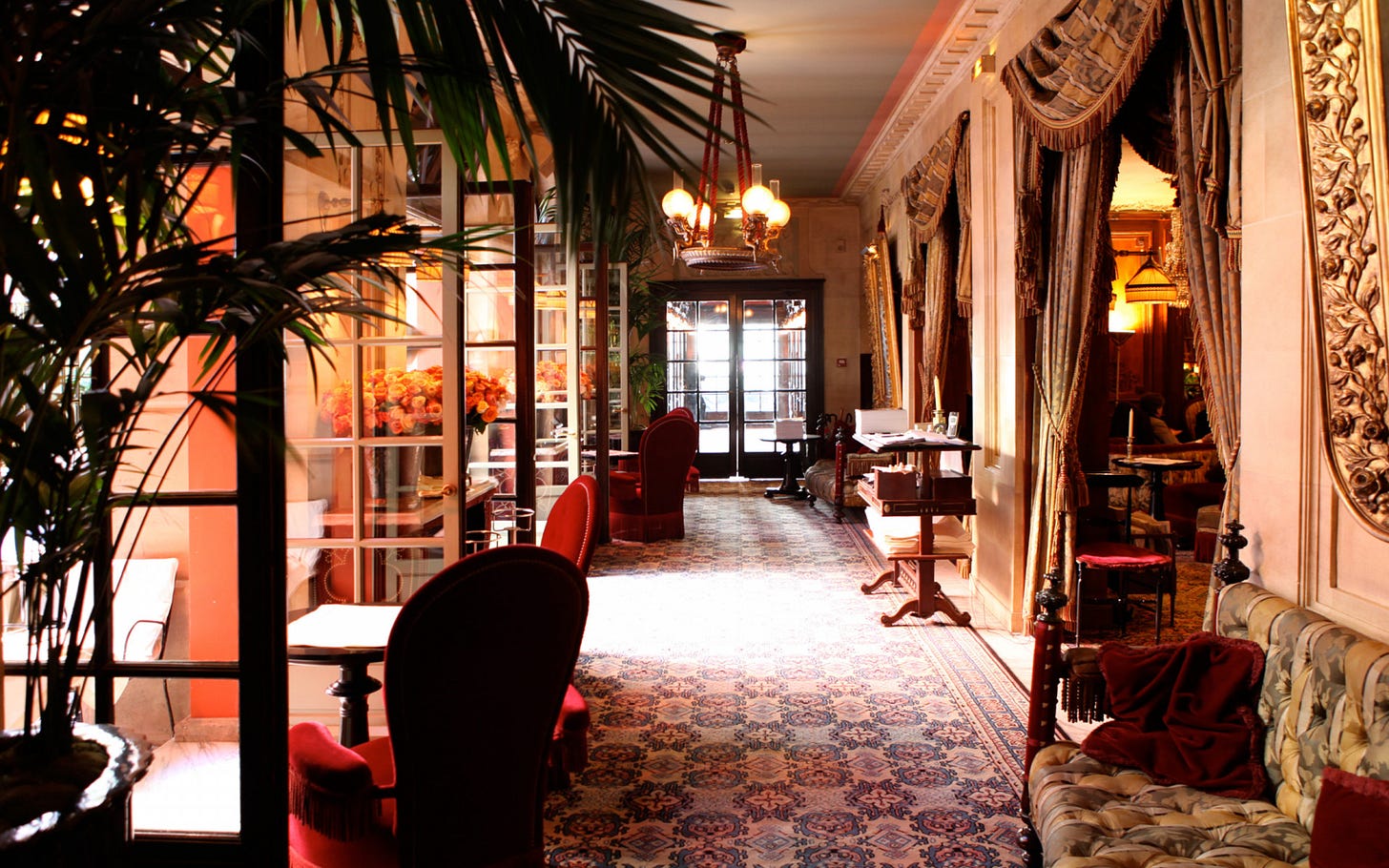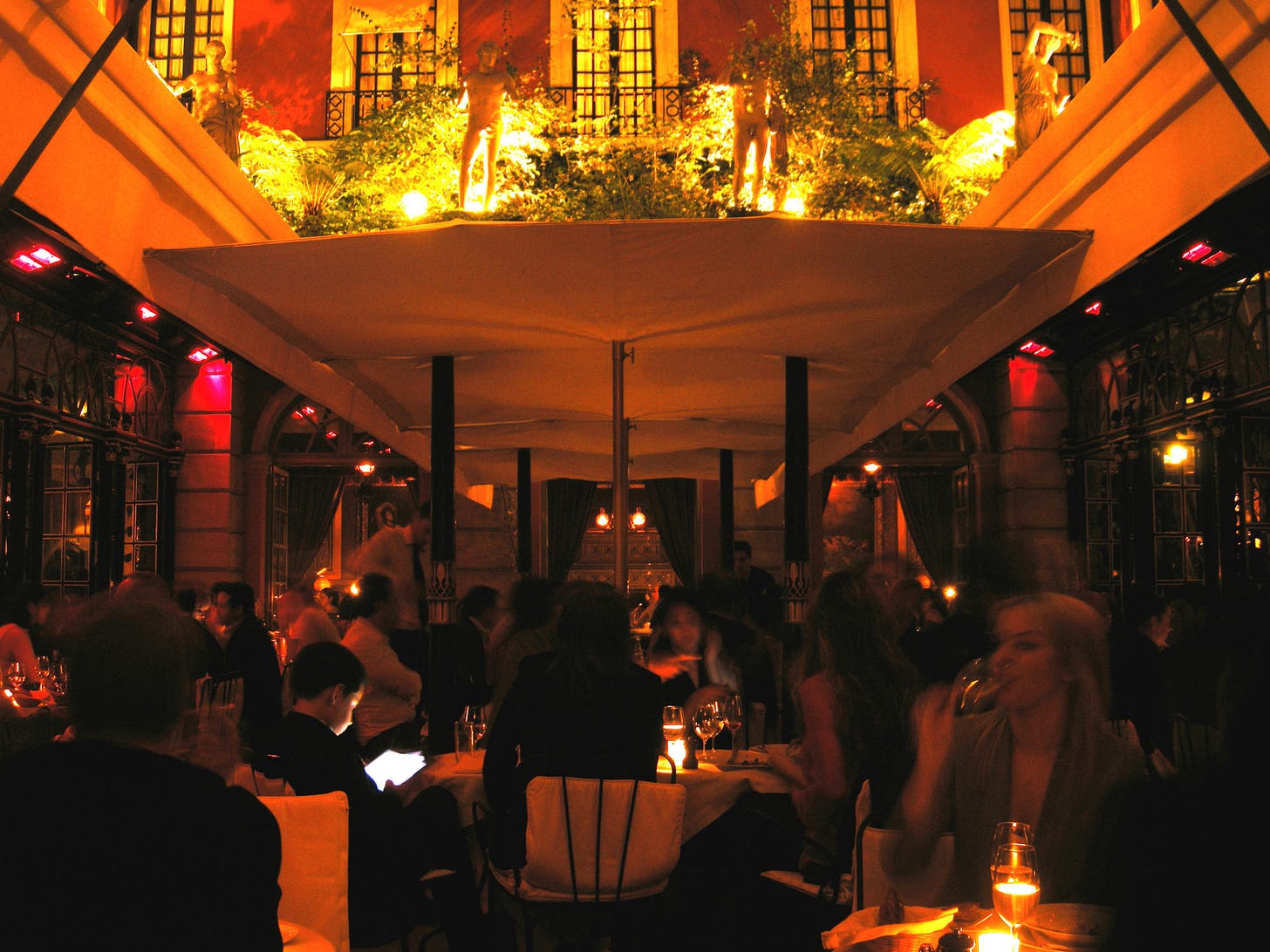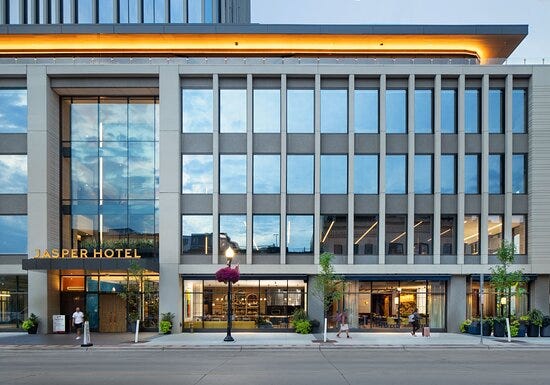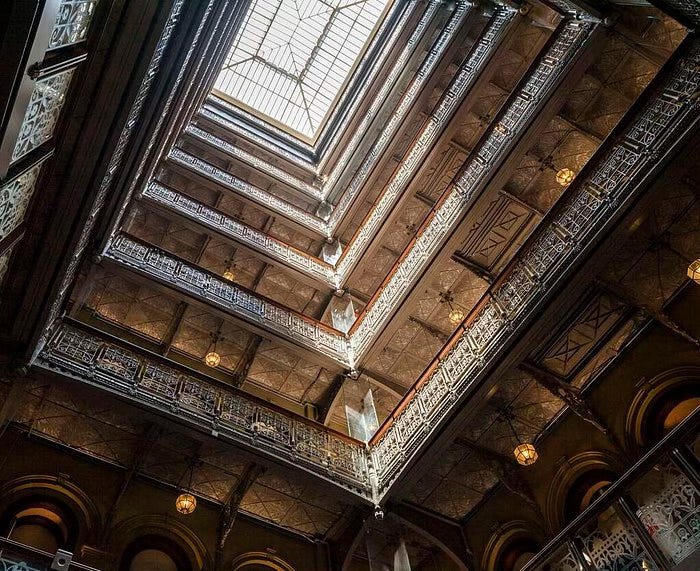Costes Essential
There is a certain old world design aesthetic that is, oh-so quintessentially, French - no wonder the world’s best new hotels are feeling its finesse.
There is a secret inner courtyard as you slip inside the hôtel Costes on Rue Saint Honoré in Paris. Whether you’re sitting down at the perfectly chic cafe here, or strutting through the darkened hallways, or just peeking down from your room’s window on all the flurry below - you’re no longer a bystander; you’re part of this beautiful world. But it’s not just by design, it’s very much an ethereal sensation that transcends brick and mortar.
“Powdery velvet, filtered light, the typical scent, the energy in each detail, the permanent coming and going, regular guests – hôtel Costes is a motionless journey,” is how Frederique Obin, head of public relations for Costes, describes the place. The hotel, designed in 1995, by hotelier Jean Louis Costes and designer Jacques Garcia, is “a living space where the scenery is designed for each moment of the day.”
What has made this iconic hotel such a darling - for over 20 years - with celebrities, style icons, and the design cognoscenti is not just the sumptuous design; it’s the style of life that comes with the property. The space took inherent French elegance and glamor and skillfully gave it a contemporary feeling - upholding the old world, but strutting into the new century where comfort and lifestyle are the new essentials.
And now for the last few years, design hotels in the U.S. are reinterpreting this, but ferociously making it their own - all with the twentieth century treatment with touches of intangibility. For these newish hotels, like the Ned Nomad in New York’s Flatiron district or The Surrey on the Upper East Side, or Little Nell in Aspen (it was redone by Champalimaud Design and Chicago designer Holly Hunt) the French muse is key - but combining it with a casual air of American warmth and candor is where the lifestyle stretches beyond just simple design.
So, in an era where everything is available online and everything is shared, inspiration can no longer be a carbon copy - it’s maybe a bit of a homage or just a miniscule push that has broken down the barriers of what hotels ought to be. It will never again be just a place to rest your head; it’s a place where you can, and always will, belong.
In America the haute design of hotelling came in a few different ways in the later part of the previous century - from the genius of hotelier Ian Schrager teaming up with designer Philippe Starck to create The Royalton in New York, to the Chicago Gold Coast Elysian Hotel that layered design and luxury inspired by Coco Chanel and Christian Dior. “We took inspiration from true innkeeping - taking pride in what’s being prepared and which families are arriving as in the south of France,” says Mario Tricoci, who developed the Elysian hotel years ago and now is the CEO/Managing Partner at Aparium Hotel Group. “But today, at Aparium we are changing this dynamic of luxury - marrying intuitive service with an approachable luxury that is first and foremost location appropriate.”
Surety Hotel in Des Moines by Aparium, a hotel I love
“hôtel Costes is so representative of Paris. They play hard, they are communal in essence, and celebrate often. They are not scared to indulge themselves. And this sense of self is elevated in a hotel atmosphere,” says Tricoci. “In fact it’s all about sexiness and glamor with the right music, fabrics, smells and, of course, people,” he adds. But what is evident is that Americans, and contemporary travelers might still want this aspirational Parisian lifestyle, but they are also looking for something more local, more authentic to today.
hôtel Costes is the epitome of Paris, it doesn’t need to be reproduced elsewhere. But the icon has motivated hotels to not emulate it, but, in fact, to rather encourage their very own timelessness. “What inspired us isn’t hôtel Costes per se - what inspired us is how it is congruent with the city of Paris. We are inspired by a real and genuine lifestyle,” says Tricoci. “Thoughtfulness is needed to make things timeless, real and to create something that is truly quintessential.” And part of this feeling of realness is why hotels have become places to hang out, to find your own community and is more and more filled with vibrant energy for everyone to partake in.
Hotel Jasper in Fargo, an Aparium property I love
“New American hospitality is all about a design schema for guests to socialize more, with both other guests and locals alike,” says Tim Murphy, CEO of Sideways Inc., a branding and creative agency with hotel adroitness. “Regardless of genre - hotels are developing their interpretation of guest connection. The boutique American hotel experience has exploded into a bevy of hyper experiences.”
For Alison Chi, Managing Director at design firm Tzelan, who worked on the rejig of The Carlyle (which was taken over by Rosewood) it’s all about looking at the bigger picture when it comes to hotel design. For her, it is the old world meeting the new world of creating a full throttle experience. “hôtel Costes succeeded in creating an atmosphere that spoke to a certain way of living, of opulence and excess that came to vibrant life from nighttime to early dusk. It's like an elegant brothel that wonderfully marries the best of French architecture and interior, and a continuity of community and culture in the heart of Paris,” she says. “It works because it's authentic. For us it’s always about context, not only in the design inside of a building, but its architecture, where it sits in a neighborhood, how it pertains to local history, traditions, and customs, and from there, we see what is or isn't congruent with what's happening on a global scale.”
Hotels are no longer just designing in solidarity, as much as they are not just reproducing something else - total alignment is of great importance. For Chi, the perfect example is The Carlyle - an iconic, classic New York institution. Inside its staff understand how to retain its grandeur, whilst pursuing a decidedly modern feel, one where service isn't stuffy or haute, but comfortable and relevant. “We worked on creating a meaningful product with an artisanal touch for this project, and we believe it is this alignment of detail to the surrounding context that makes the experience memorable for the guest,” Chi adds.
And guests, inspired by being part of a hotel’s lifestyle, are paying extra attention to these details that make up the experience. Martin Brudnizki, who did the design for the Beekman Hotel in New York, it’s all about harnessing the old to make it workable for modern day: “In the bedrooms, guests will find modern conveniences throughout, such as a variety of decorative lighting, all of which are dimmable and a mini-bar with a twist; its aesthetic harks back to the Victorian era with its base crafted from an antique table with a thick patterned cloth draped over and a silver tray on top stacked full of liquor bottles. Guests are able to open up the fabric to reveal the main mini bar selection and thus seamlessly blend concepts of old and new,” adds Brudnizki.
Beekman NY
hôtel Costes gave us communal spaces, petite rooms that feel like cabins of glamor, and revived a lost art of effervescence in its curated atmosphere. Today hotels are merging this extreme elegance, the real style of life with world class service - it’s the ultimate idea of timelessness. And that is the 21st century hotel. And what a sigh of relief.













